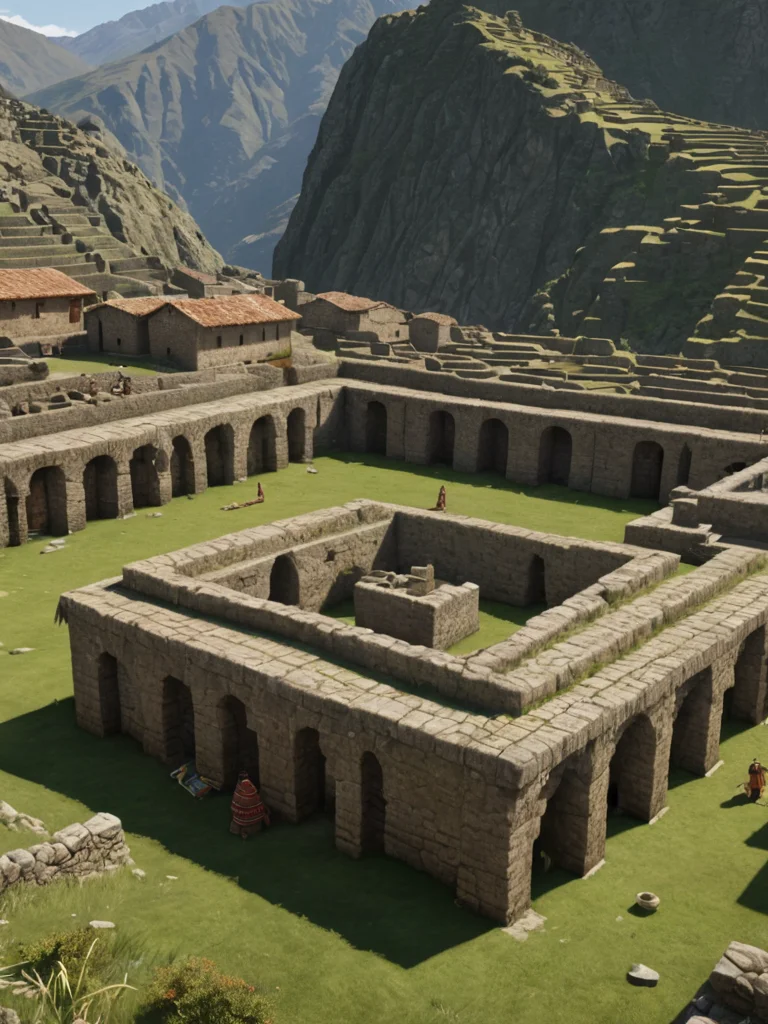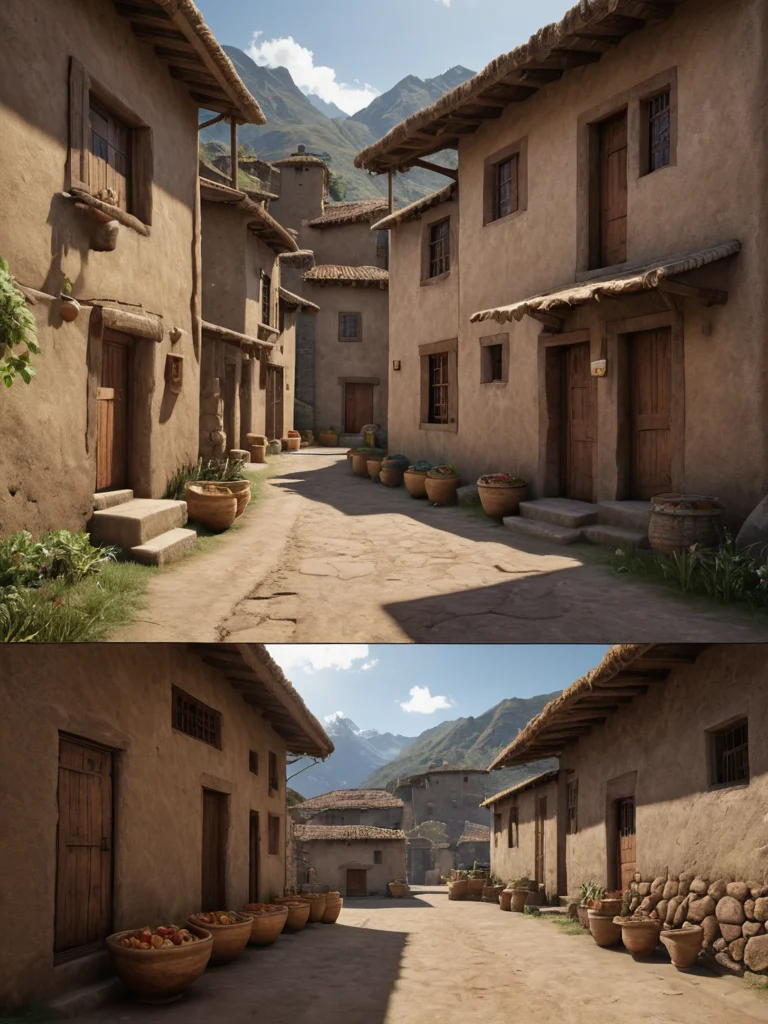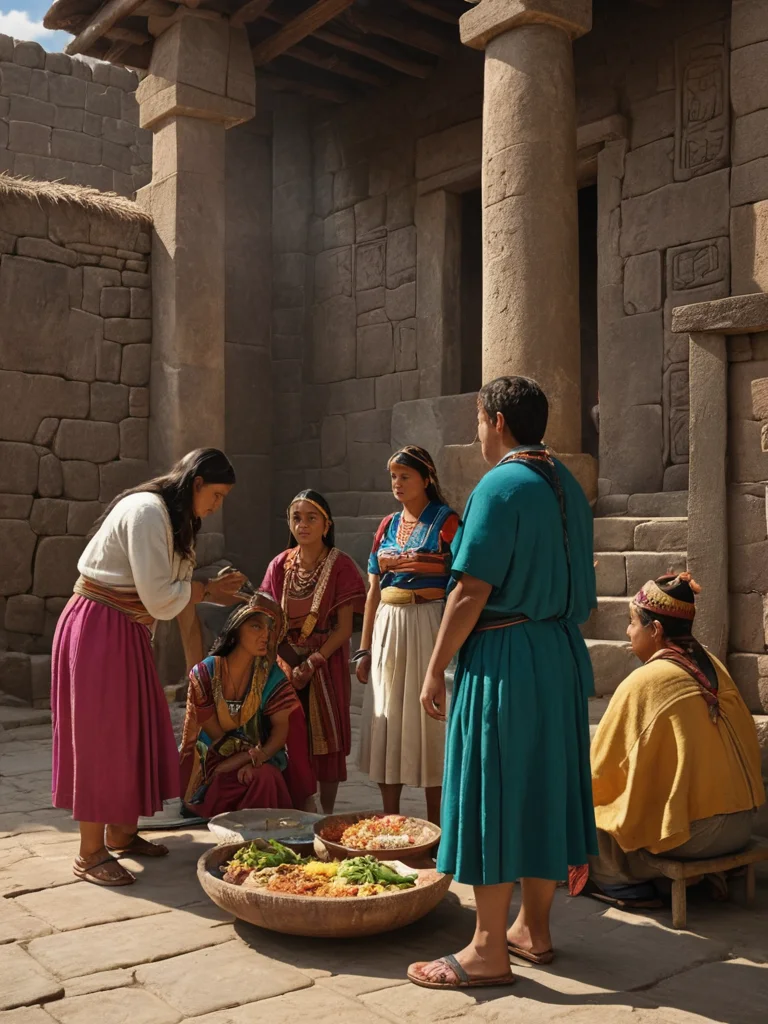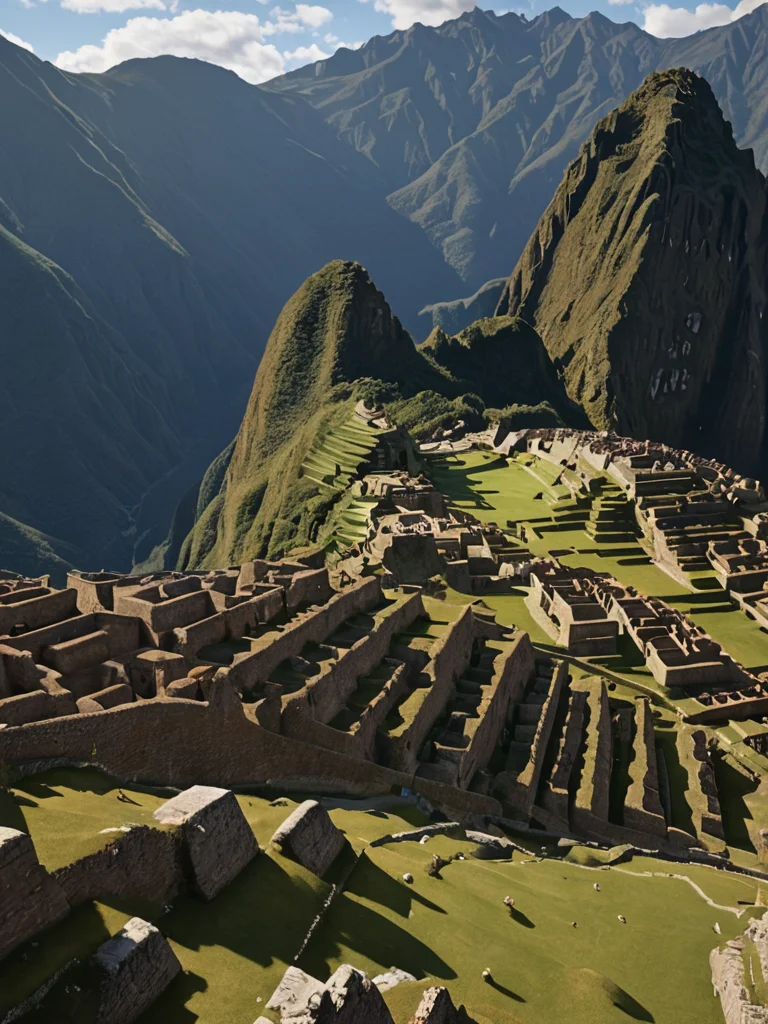The Inca Empire, Tawantinsuyu as they called it themselves, was a unique example of state organization in human history. Sprawling along the Andes Mountains, this civilization knew no wheel or writing in the conventional sense, yet managed to create a vast and prosperous empire based on total control and comprehensive social security. Historians and anthropologists still debate whether it was a “socialist paradise” or a “totalitarian utopia,” but one thing is certain: the Incas created a complex system that allowed them to govern millions of people and provide for their basic needs.
Introduction: The Mysterious Inca Empire – How Total Control Ensured Stability and Prosperity
To understand the phenomenon of the Inca Empire, it is necessary to realize that their success was due not only to military might but also to their ability to organize and manage vast amounts of resources and people. The system they developed was based on principles of reciprocity and redistribution, where the state played the role of supreme manager and guarantor of the well-being of every member of society. Can you imagine that every aspect of a person’s life, from birth to death, was regulated and controlled by the state? From the amount of product produced to the choice of a marriage partner – all this was part of a carefully thought-out system aimed at ensuring the stability and prosperity of the empire.
Total Control in the Inca Empire: From Population Census to Resource Management – How Did the System Work?
Total control in the Inca Empire was evident in all spheres of life. Let’s start with the population census. The Incas meticulously counted every inhabitant of the empire, using a complex system of knot writing – quipu. Quipus were ropes with knots of different colors and sizes tied on them, each representing a specific category of data: the number of men, women, children, elderly, the size of the harvest, the number of livestock, etc. This information allowed the Incas to accurately plan production and resource distribution.
Imagine if every year in your country, not just a population census was conducted, but a detailed inventory of all resources, from the amount of grain in the granaries to the number of llamas in the pastures. This is exactly how the accounting system worked in the Inca Empire. This information was sent to the capital, Cusco, where officials analyzed the data and made decisions on how to distribute resources among the various regions of the empire. If one region had a poor harvest, surpluses from another region were redistributed to prevent famine.
Resource management was also strictly controlled. All land belonged to the state, and peasants received plots for cultivation for temporary use. Part of the harvest went to support the family, and another part went into state granaries. These granaries were used to supply the army, officials, artisans, and to provide assistance to those in need in case of natural disasters or crop failures.
The road system played a key role in ensuring control and governance of the empire. The Incas built an impressive network of roads, over 40,000 kilometers long, connecting all corners of the empire. Couriers – chasquis – traveled along these roads, delivering messages and orders from the capital to the most remote provinces. Chasquis worked in shifts, relaying messages, which allowed for very fast information delivery. Imagine the news of a rebellion in one province reaching the capital in just a few days!
Control over the population was exercised through the mita system, mandatory labor service. Every man was obliged to work a certain amount of time on state projects, such as building roads, temples, irrigation systems, or mining. Mita was not only a way to provide the empire with labor but also an instrument of social control. It allowed the state to move populations from one region to another, thereby preventing the concentration of power in the hands of local elites and reducing the risk of uprisings.

Inca Social Security: Food, Shelter, and Work for Everyone – Truth or Myth of an Ideal Society?
The Incas created a social security system that was unique for its time. The state guaranteed every member of society access to food, shelter, and work. No one was supposed to go hungry or be left homeless. This system, however, was not based on altruism or humanism, but rather on pragmatic calculation. The Incas understood that a well-fed and content populace is a loyal populace that will not rebel against authority.
Food security was a priority for the Incas. State granaries were always filled with supplies of grain, potatoes, corn, and other products. In case of crop failure or natural disaster, these reserves were used to assist the victims. The resource redistribution system allowed the Incas to prevent famine and ensure a stable food supply for the entire population of the empire.
Each family was provided with a plot of land for cultivation, the size of which depended on the number of family members. The land was considered state property, and peasants could not sell or inherit it. They had to cultivate the land and give a portion of the harvest to the state as tax. In return, the state provided them with protection, irrigation, and other necessary resources.
Housing was also provided by the state. Houses were built of stone or clay and were quite simple but functional. Each family had the right to their own home, which was protected from the weather and provided basic amenities. The state also took care of the construction of public buildings, such as temples, schools, and hospitals.
Work was mandatory for all able-bodied members of society. Every man was obliged to work a certain amount of time on state projects as part of the mita system. This system provided the empire with labor for the construction of roads, temples, irrigation systems, and other important facilities. Women engaged in household chores, weaving, and other crafts. Unemployment did not exist in the Inca Empire.
However, it is important to understand that the Inca social security system was closely linked to total control. People had no freedom to choose their place of residence, work, or lifestyle. All decisions were made by the state, and people had to obey these decisions without objection. This system, while providing for the basic needs of the population, also suppressed individual initiative and creativity.

Daily Life of the Incas: Work, Family, and Beliefs – What Did It Mean to Be Part of the Empire?
The daily life of the Incas was strictly regulated and subordinate to the interests of the state. The majority of the population was engaged in agriculture, growing potatoes, corn, quinoa, and other crops. Field work was hard and required a lot of effort, but it provided people with food and other necessary resources.
The workday began with sunrise and ended with sunset. People worked in the fields as a whole family, from young to old. Children helped their parents with harvesting, animal care, and other simple tasks. The elderly also participated in work, performing lighter tasks such as making ropes or crafting clothes.
Family played an important role in the lives of the Incas. Families were large and multi-generational, consisting of several generations of relatives living together. Older family members were highly respected and authoritative, and their advice and guidance were very valuable.
Marriages were arranged by parents, and often young people had no say in choosing a partner. The state also intervened in marital affairs, encouraging marriages between people from different regions of the empire to strengthen unity and prevent separatism.
Beliefs played an important role in the lives of the Incas. They worshipped many gods, the most important of whom was the sun god Inti. The Incas believed that the sun gave life and strength to all living things, and therefore special honors were paid to him. The Incas also worshipped the earth goddess Pachamama, who was considered the mother of all living things and the patroness of fertility.
Religious ceremonies were held regularly and were an important part of social life. All members of society participated in these ceremonies, from the emperor to the common peasants. The ceremonies were accompanied by singing, dancing, sacrifices, and other rituals. The Incas believed that the gods could influence their lives, and therefore they tried to appease them with their prayers and sacrifices.
Inca clothing was simple and functional. Men wore tunics made of llama or alpaca wool, and women wore dresses and cloaks of the same fabric. Clothing was usually plain, but sometimes decorated with embroidery or appliqué. The Incas also wore headdresses that indicated their social status and origin.
Inca food was simple and nutritious. The basis of the diet was potatoes, corn, quinoa, and other grains. The Incas also ate llama, alpaca, and guinea pig meat. They did not know many foods that we eat today, such as wheat, rice, sugar, and fruits, but their diet was quite balanced and provided them with the necessary nutrients.

Lessons from the Inca Empire: What Can We Learn About Control and Social Justice from Past Experiences?
The Inca Empire represents a unique example of state organization that can teach us a lot today. On the one hand, their system of total control and social security allowed them to create a prosperous and stable society where every member had access to food, shelter, and work. On the other hand, this system suppressed individual freedom and initiative, turning people into cogs in a huge state machine.
One of the main lessons we can draw from the experience of the Inca Empire is that social justice and economic equality cannot be achieved at the cost of suppressing individual freedom. The state should not interfere in all aspects of people’s lives but should create conditions for their self-realization and development.
Another important lesson is that sustainable development is possible only with the rational use of resources and careful treatment of the environment. The Incas knew how to use natural resources in a way that did not harm the environment, and their experience can be useful to us today as we face problems of climate change and resource depletion.
The Inca Empire also shows us that a strong state is necessary to ensure the stability and security of society. The state must be able to protect its borders, ensure law and order, and provide assistance to those in need. However, the state should not become an end in itself but should serve the interests of its citizens.
Ultimately, the experience of the Inca Empire shows us that there is no such thing as a perfect society. Every system has its advantages and disadvantages, and it is important to strive for a balance between different values such as freedom, equality, justice, and security. The lessons of history can help us better understand the present and build a more just and sustainable future.
